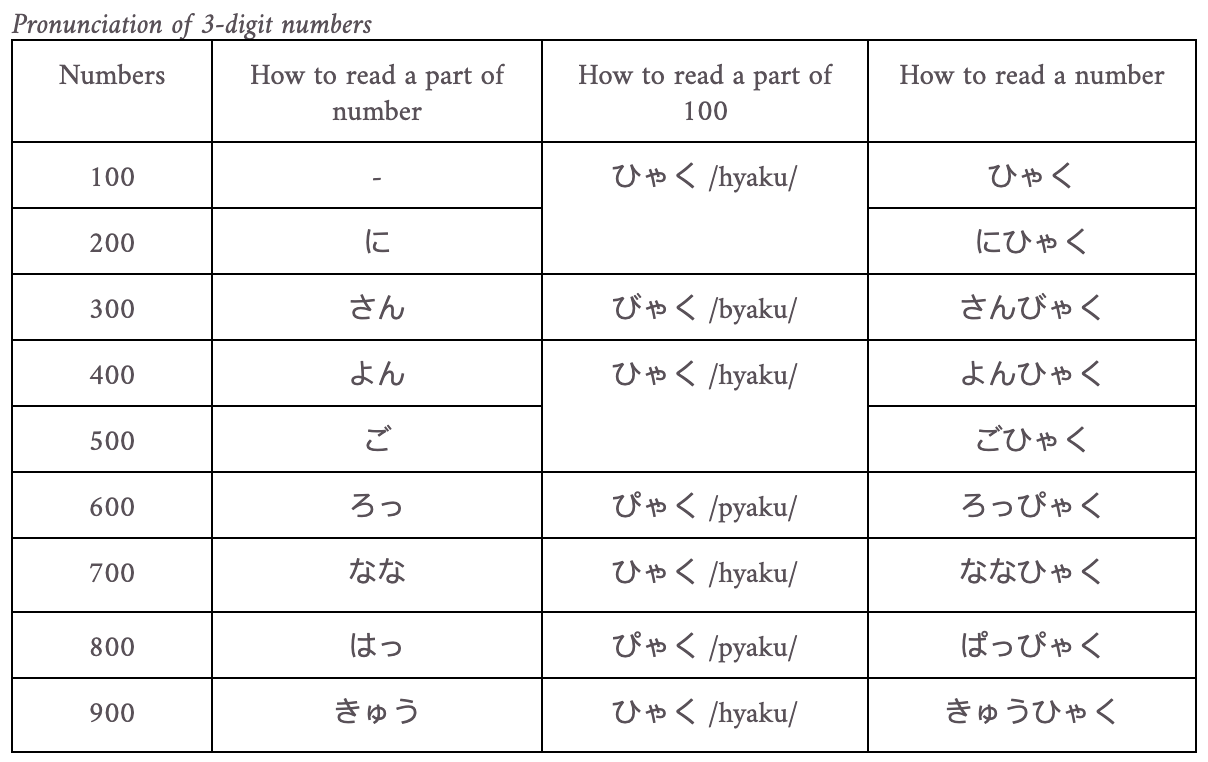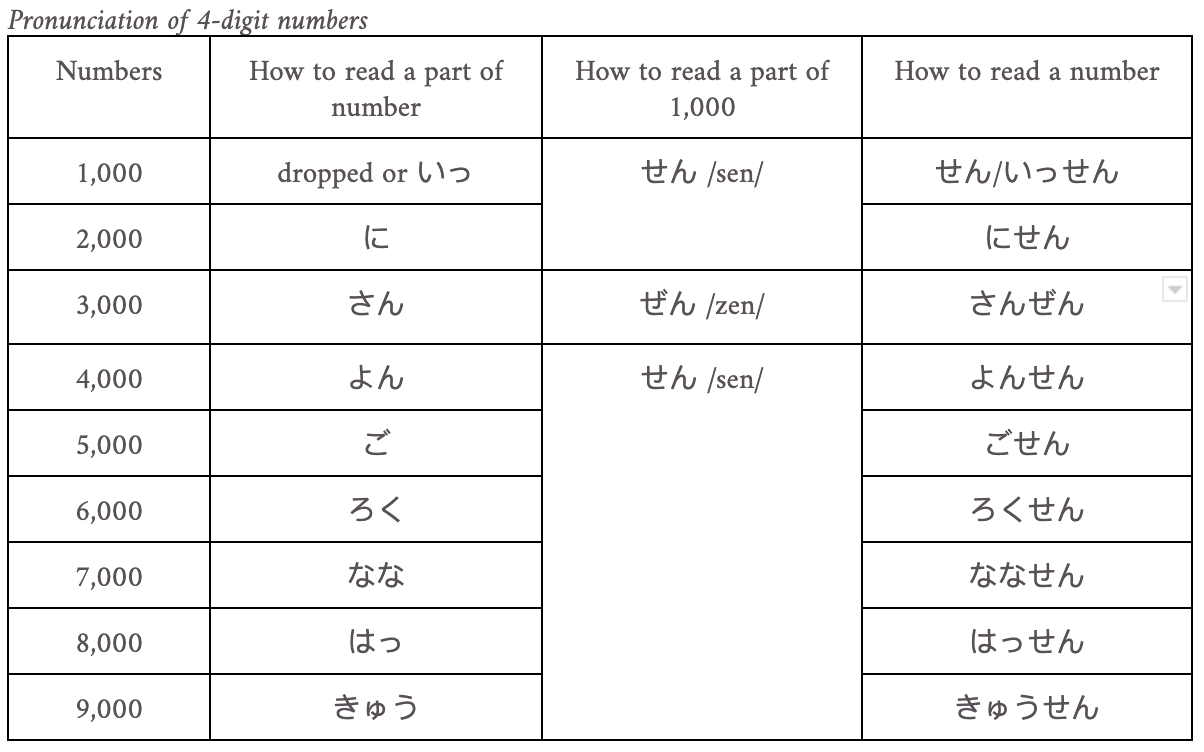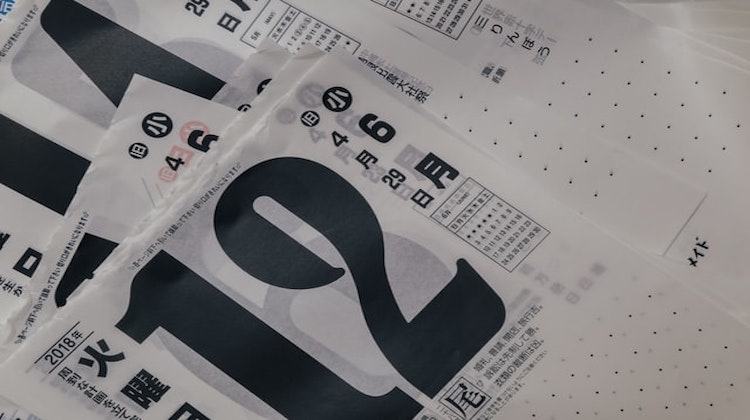The reading of numbers is one of the most elementary units in language learning and is an essential part of daily life. I often find that even upper-intermediate learners struggle to recall them. Numbers are more complicated than they look. The more digits you have, the more confusing it can be, even in your own language, and even more so in a second language. This is a good opportunity to make sure you know how to read Japanese numbers.
Japanese nouns do not have a plural form, so instead of changing the form of the noun, we use a unit called 数助詞(すうじょし) to express the number. For example, to describe the length of a swimming pool, we say "50m", but in Japanese, there is an equivalent "m" for each noun. This is 数助詞. Some 数助詞 change the way you read numbers, but we won't go into that in this article. In this article, we will focus on the common ways of reading numbers, such as those used in mathematical expressions.
How to count numbers from 1 to 99 in Japanese
The rules for counting numbers are very simple. There are no irregularities such as “-ty” or “-teen”, even when the number of digits increases. The numbers 1 to 10 are read as いち、に、さん、し/よん、ご、ろく、しち/なな、はち、きゅう、じゅうand these rules are basically followed. For example, 12 is pronounced じゅうに (じゅう+に), 20 is pronounced にじゅう (に+じゅう) and 22 is にじゅうに (に+じゅう+に).
There are two ways to read 4 and 7, し/よん and しち/なな, and this is where learners of Japanese are most likely to make mistakes. The table below shows when to use which one.

Both readings of 4 and 7 are correct when they are single digits, and the same applies to the single-digit part of a two-digit number. For example, the number 14 can be pronounced either じゅうよん or じゅうし. However, when 14 is pronounced as じゅうし, it is easily mistaken for 17 (じゅうしち), so じゅうよん is more common.
Counting over 3 digits-numbers in Japanese
I’m going to explain the exceptions to the pronunciation rule. For example, the number 100 is pronounced ひゃく /hyaku/, but it can be pronounced びゃく /byaku/ or ぴゃく /pyaku/, depending on the number that comes before it. The pronunciation of 6 and 8 may also be different from when read alone. These features appear in 3 and 4 digit numbers. The number chart below summarizes this.


The letters 10, 100 and 1,000 are pronounced じゅう, ひゃくand せん. The pronunciation of 1 is omitted unless it is said with particular emphasis. However, from 10,000 onwards, the 1 is pronounced as in いちまん (ten thousand) and いちおく (hundred million). In Japanese numbers, the name of the unit changes every four zeros after ten thousand.

Japanese numbers in Kanji
In Japanese, in addition to numbers, you can also use kanji to represent numbers. For example, the numbers 1 to 10 are 一、二、三、四、五、六、七、八、九、十. You may have seen the notation 壱、弐、参、肆、伍、陸、漆、捌、玖、拾 before, but this is a special notation called 大字 (だいじ). It is used on important documents and banknotes and is intended to prevent forgery and falsification by making the kanji characters that have fewer strokes more complex. It is sometimes used for proper nouns but is rarely used as a numeral in daily life.
There are no clear rules about when to use numbers and when to use kanji, but it is more common to use numbers when expressing dates, times, and amounts in daily life. For example, 12月31日 (31st December), 午前7時 (7am), 4,500円 (4,500 yen). The problem with using numbers in Japanese is that Japanese keyboards have 全角数字 (ぜんかくすうじ), which are numbers that fit into the Japanese character width (square shape). For example, if you use 全角数字 to represent the 31st of December, it will be the 12月31日. Numbers with the same character width as the English alphabet (vertical rectangular shape) are called 半角数字 (はんかくすうじ). Because 全角数字and 半角数字are recognized as different symbols by computers, Japanese online services often have problems recognizing addresses entered using半角数字.
This time we went over the basic pronunciation of numbers and kanji. As I said in the intro, this is not the whole explanation of numbers in Japanese. The most difficult part of reading Japanese numbers is数助詞. First of all, learn the basic rules and gain confidence in reading numbers.







